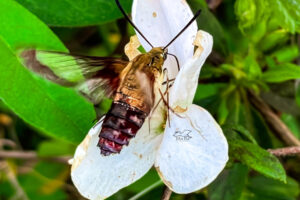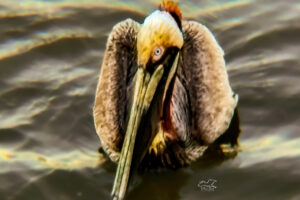The Beautiful Amanda’s Pennant is a Very Busy Dragonfly

The last couple of times that I have gone out to hike in the part of Gothe State Forest that backs up on my property, I have encountered quite a few of these pretty yellow dragonflies with large wing spots. To say I’ve been intrigued is an understatement. They were so pretty that I really wanted to get some photos of them, but I wasn’t having much luck. Every time I would see one I would follow it around in the underbrush waiting for it to perch. Many of them didn’t before I lost them, but the ones that did wouldn’t let me get anywhere close to them. I tried over and over again with no luck. I even tried to get some shots of them with my telephoto lens, but none of them came out well at all (probably the photographer rather than the lens, but the result is the same).

Then, as I was almost home my last trip out, one flew in and perched on a small snag right in the middle of the path. I approached it very slowly (as I had the others), expecting it to fly away at any second, but it seemed very content where it was. It was almost like it wanted it’s picture taken! It was definitely aware of me, and looked at me several times, but it never left. Finally, I was able to not only get one or two good shots, but several from various angles. I headed home in a very great mood, and as I left, the dragonfly still sat right there on that same snag, waiting for the next photographer to come along (actually probably looking for insects to fly by).

With decent photos, it wasn’t difficult to identify the little dragonfly as an Amanda’s pennant (Celithemis amanda). It’s a fairly common dragonfly in the southeastern United States. It can be found from eastern Texas, through Florida, and up into South Carolina. Like other pennants, it’s well known for perching on the tops of snags or bits of vegetation in a position that looks somewhat like a flag. Even though they are common, they have not been well studied. Little is known about their reproductive habits or their life cycles, although it is assumed that it’s similar to other small dragonflies. They can usually be found flying between May and October and males tend to stay near bodies of water. Females, on the other hand, may wander into forests, open fields, and crop fields. I have to say that I was a little disappointed by the limited amount of information about them, but I was still really pleased to have finally gotten the images that I wanted, and added a new species to my life list.





Recent Comments